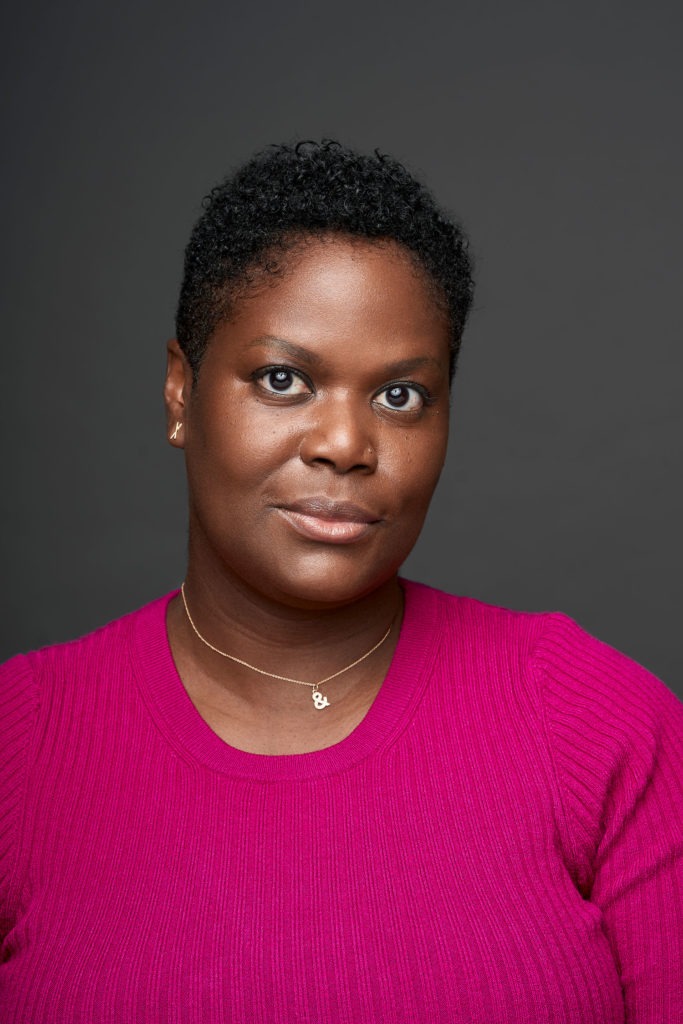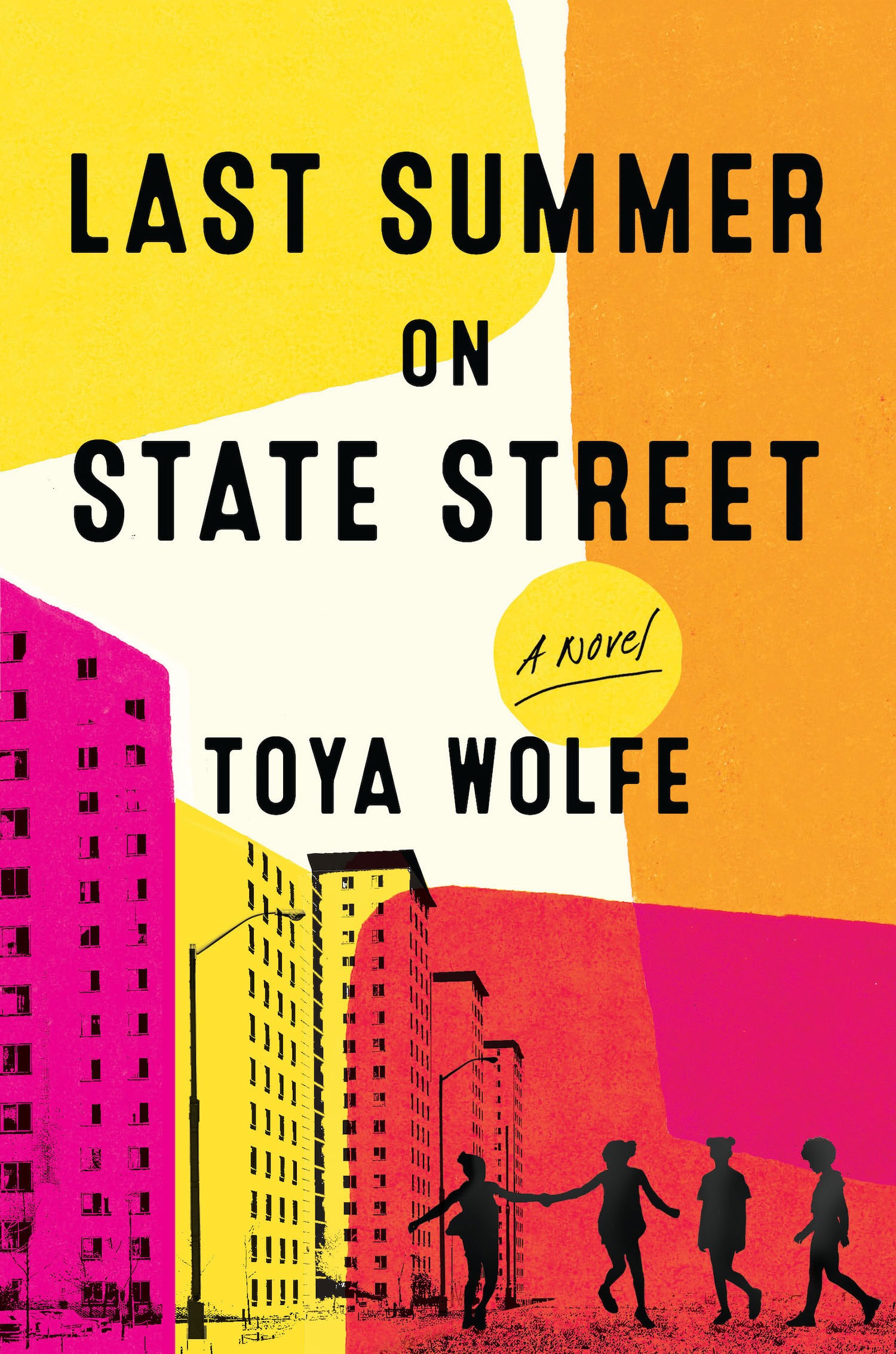From 1959 to 2005, the Chicago Housing Authority’s Robert Taylor Homes stood along State Street in the Bronzeville neighborhood. The 28 high-density high-rises towered along a two-mile corridor from 39th to 54th Streets. Toya Wolfe — a graduate of the MFA program in Creative Writing at Columbia College — grew up there. Named after the civic leader who became the CHA’s first Black chairman (but resigned in 1950 when the city council refused to approve building locations that would have promoted integration), the Taylor Homes became notorious for segregation, violence, and neglect. Wolfe has written a bittersweet coming-of-age novel set in building 4950 in the summer of 1999, the eve of that structure’s demolition. A complex and compassionate look at the friends and families, relationships and resistance that existed in that now long-gone but not forgotten time and place, Last Summer on State Street is out June 14 from William Morrow.
Why center the book on four young female friends: Fe Fe, Precious, Stacia, and Tonya? And why make Fe Fe the narrator?
The point of view of a young, Black girl is one of the most underrepresented perspectives in storytelling. In both literature and television, when a young person holds court in this way, it’s often a white boy. I didn’t intentionally set out to solve this problem; actually, I was just curious about how a girl from a Chicago project that was slated for demolition would feel and express herself about it.

Alex Kotlowitz says that you write with “such grace and such restraint, I felt like I was sitting on the front porch listening to a story told by a friend.” How did you settle on your narrative voice, and did you hold a particular person or listener in mind to achieve that intimate, conversational tone?
During my time at Columbia College Chicago, I was taught that writing is stronger when you address your first draft as a letter. We had to write the name of someone at the top of the page, then carry on with our writing. I wasn’t so intentional with this book, but I bet that muscle had strengthened by the time I began it. The narrator’s seemingly direct address also has a lot to do with the specific story I set out to tell, about a place that was-slash-is unfamiliar to so many people. To live on State Street in one of those high rises was such a unique experience. It helped me to remember that many people would have no clue what the spaces looked like or be familiar with the culture of this community. So in some ways, I addressed this book to anyone who didn’t grow up in the Robert Taylor Homes, but it was also important for me to write it in a way that would still be interesting to the people who grew up in this world or saw themselves in it, especially Black women and girls.
You open with Double Dutch, specifically the game called All in Together, and weave that activity through the rest of the story. How did jump rope become a motif?
Societally, we often think of a little boy with a pitcher’s mitt or a basketball. For a little girl, I imagine a jump rope as a similarly important object. It definitely was for me. Then, when you start to think about what ropes look like — they are woven, intertwined — the jump rope reminds me of a visual for friendship. I thought too as I wrote about what ropes can do: capture someone and hold onto them, which is what Fe Fe tries to do. And of course, it’s a major tool for playtime for the girls in this story.
Your writing is vivid and packed with cinematic scenes, but periodically, Fe Fe stops and interjects a blunt, argumentative statement, like, “Maybe the worst part about growing up in public housing is that people think your body is public too. That even before you are born, your Black body already belongs to the owners of the land.” This book feels like it wants both to entertain and to educate — what do you most hope your readers get out of it?
I hope that people will meet these girls and start to learn that girls are not these fragile victims, whose stories are joyless, lack adventure and intelligence. I hope I presented four very distinct little people who broaden the horizons of some readers. I knew that the book would be entertaining if I could really get down on the page what I could see in my head. The education part is really out of my hands. I tried to present a community not often talked about in the way in which I recalled it. What readers learn about this world and the characters who inhabit it will be entirely up to them.
“There was nowhere in my life I could just be quiet except in church,” Fe Fe observes, discovering the peace that religion can give her. Can you speak about the role of faith in your own life growing up and in your writing?
Unlike Fe Fe, I was born into Christianity; it was all around me for as long as I remember. This faith helped me feel safe — sometimes — and gave me hope for a better world outside of the one that I was experiencing. I wanted to explore what it would look like to have an introduction to God, an invitation really, at a young age. Fe Fe gets to walk into a church community and because she is a reflective thinker, she compares her times inside and outside of church, something that I can also do now that I’ve been on both sides.
Fe Fe’s story is a crucial addition to the Chicago canon. What Chicago books do you most enjoy and what authors generally did you draw inspiration from?
When I started this novel, I had Toni Cade Bambara’s short story, “The Lesson,” on my mind, as well as Toni Morrison’s The Bluest Eye and Alice Walker’s The Color Purple. I kept asking myself, what kind of Black woman writer would I be? What would I add to that canon?
After I started writing these stories about the kinds of people I spent time with or saw around the neighborhood, that’s when I found the Sandra Cisneros novel, House on Mango Street and Gwendolyn Brooks’s poetry, distinct Chicago stories. What I got from all of these incredible women writers was that girls have things to say, and that I should write about the girl I once was and the ones that I knew, but never wanted to be like. We all had a perspective and I wanted to write about all of them!
I also went back and re-read Native Son by Richard Wright. It presented Bigger as an active, troubled teen, and I wanted to show a different kind of Black boy in Meechie: one who was being bullied by gangs and the police, but also a boy who sought mentorship, leadership, and adventure.
Fe Fe thinks often of wanting to save the people in her life — her brother Meechie who joins a gang, for instance, and her friend Tonya, facing sexual abuse. Where does salvation come from, and does literature play a role, and what can be done about the systemic problems this story explores?
I think Salvation — with a capital S — can only come from God. The smaller s that I think literature, activities, and good people can provide, comes from a bit of a respite that you can get from whatever ails you. This is temporary, like what Tonya receives in the book, these moments of joy and escape.
What can be done about the myriad of systematic problems present in Last Summer on State Street? Wow, that’s a huge question. Perhaps it starts with calling things out. Speaking up about them. So much happens in the shadows. Whether it’s sexual abuse or neglected housing, if everyone’s quiet about these things, it can very easily continue. What happens after something is exposed, written about, talked about, I think there’s an opportunity for change.
Related Content



